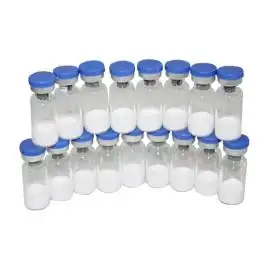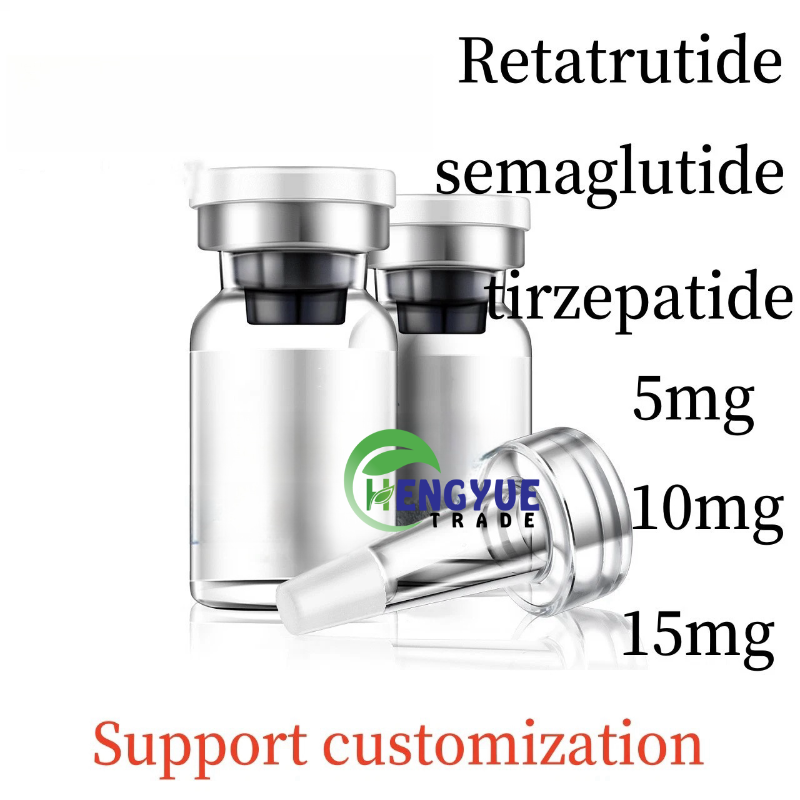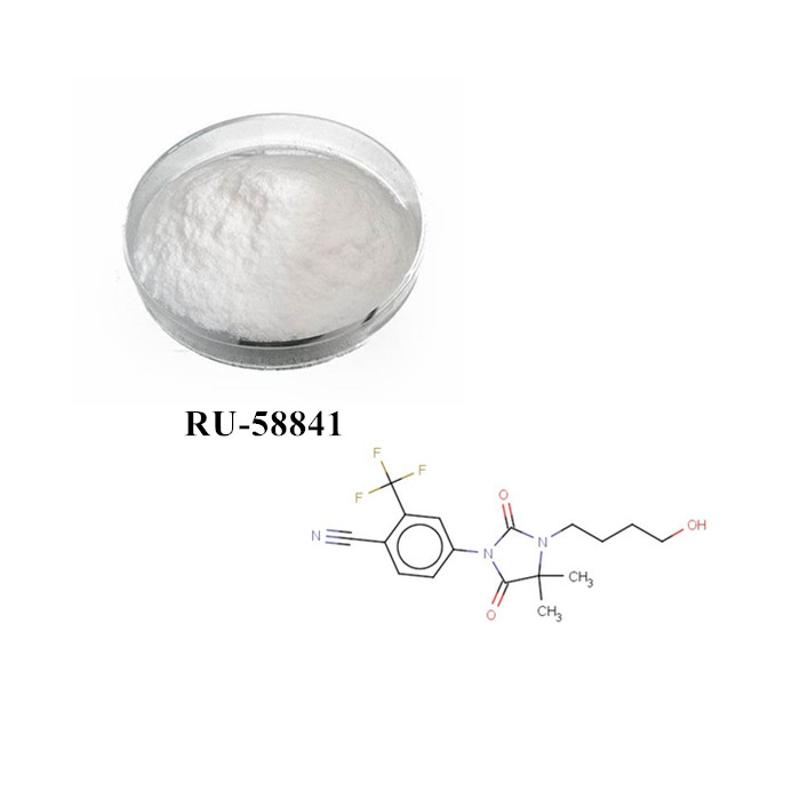-
Categories
-
Pharmaceutical Intermediates
-
Active Pharmaceutical Ingredients
-
Food Additives
- Industrial Coatings
- Agrochemicals
- Dyes and Pigments
- Surfactant
- Flavors and Fragrances
- Chemical Reagents
- Catalyst and Auxiliary
- Natural Products
- Inorganic Chemistry
-
Organic Chemistry
-
Biochemical Engineering
- Analytical Chemistry
-
Cosmetic Ingredient
- Water Treatment Chemical
-
Pharmaceutical Intermediates
Promotion
ECHEMI Mall
Wholesale
Weekly Price
Exhibition
News
-
Trade Service
In 1982, three laboratories discovered the first confirmed human oncogene, RAS, and cloned three variants: KRAS, HRAS, and NRAS
Following the discovery of KRAS G12C inhibitors, scientists have turned to other KRAS mutants, as well as to develop pan-KRAS (pan-KRAS) targeted therapies that can target multiple, or even all, KRAS mutants
The promise of targeting KRAS
The promise of targeting KRASKRAS mutation and wild-type KRAS amplification are found in colorectal cancer (~45% in the US, ~49% in China), pancreatic cancer (~90% in the US, ~87% in China), non-small cell lung cancer (NSCLC, ~35% in the US, China ~ 13%) often occur in patients
While KRAS mutations represent the most common genetic mutation in multiple cancer types, wild-type KRAS amplification is the predominant type in other cancers (eg, invasive ductal carcinoma of the breast, gastric adenocarcinoma, esophagus and gastroesophageal junction cancer)
▲ Proportion of different KRAS mutations in newly diagnosed cancer patients in the United States (Image source: Reference [1])
The review authors' analysis indicated that approximately 11.
Mutant-specific KRAS inhibitors
Mutant-specific KRAS inhibitorsThe success of KRAS G12C inhibitors has provided proof-of-concept for the development of mutant-specific KRAS inhibitors
▲Some mutant-specific KRAS inhibitors under investigation (Image source: Reference [1])
What sets it apart is RMC-6291, developed by Revolution Medicines
▲The ternary complex platform of Revolution Medicines can selectively target KRAS G12C in the activated state (Image source: Revolution Medicines official website)
Beyond targeting KRAS G12C, the next research frontier is the development of effective therapies targeting all other KRAS mutants
Revolution Medicines used its ternary complex platform to develop a covalent inhibitor of KRAS G12D that targets the activated state
Image source: Revolution Medicines official website
The company's covalent inhibitors targeting the activated KRAS G13C mutant have also shown anticancer activity in preclinical experiments
Development Strategies for Pan-KRAS Targeted Therapies
Development Strategies for Pan-KRAS Targeted TherapiesThe development of pan-KRAS inhibitors capable of inhibiting the activity of all KRAS mutants has the potential to treat patients with a wide range of KRAS mutant cancers.
indirect inhibition strategy
Major targets for indirect inhibition of KRAS activity include SHP2 and SOS1
SHP2 inhibitors can disrupt SOS1-mediated GTP substitution of KRAS-bound GDP, thereby inhibiting KRAS activation
▲Part of the SHP2 inhibitors under development (Image source: Reference [1])
SOS1 inhibitors block the binding of the guanine nucleotide exchange factor (GEF) SOS1 protein to inactive KRAS, preventing GTP from replacing GDP, thereby inhibiting KRAS activity
▲Part of the SOS1 inhibitors under development (Image source: Reference [1])
Since both SOS1 inhibitors and SHP2 inhibitors leave KRAS inactive for more time bound to GDP, they work well in combination with mutant-specific inhibitors that bind to inactive KRAS, such as KRAS G12C inhibitors scientific basis
direct suppression strategy
Using KRAS fragment screening and structure-based drug design, Boehringer Ingelheim reports the discovery of pan-KRAS inhibitors that act directly on KRAS, and pan-KRAS protein degraders
Protein degraders represented by PROTAC can utilize the protein degradation mechanism of cells to target and degrade specific proteins
.
This emerging therapeutic modality may provide the means to degrade all KRAS mutants
.
At present, scientists have successfully converted covalent inhibitors targeting KRAS G12C into PROTAC molecules, but the PROTAC molecules covalently bound to the target are also consumed in the process of degrading KRAS, so compared with covalent KRAS G12C inhibitors , the advantage is not clear
.
Boehringer Ingelheim has reported the generation of KRAS-selective PROTAC protein degraders that degrade all common KRAS mutants without affecting NRAS and HRAS
.
Theoretically, PROTAC protein degraders have the potential to block the KRAS signaling pathway more rapidly and more persistently
.
Furthermore, by choosing an appropriate E3 ligase, it is possible for PROTAC molecules to achieve tissue selectivity
.
However, whether this mode of action can better prevent the development of resistance still needs to be tested experimentally, because PROTAC molecules need to face different resistance-generation mechanisms related to the protein degradation process
.
▲Part of the pan-KRAS inhibitors under research (Image source: Reference [1])
Comparison of pan-KRAS-targeted and KRAS mutant-specific targeted therapies
According to the authors, KRAS mutant-specific drugs and pan-KRAS drugs have different advantages and disadvantages
.
KRAS mutant-specific drugs have several advantages.
First, this class of drugs is expected to produce deep and durable target inhibition in a well-defined patient population, and it has a lower risk of toxic side effects due to inhibition of wild-type KRAS.
The possibility of drug combination is high
.
In future clinical research and practice, this class of drugs is an obvious choice in an early treatment setting, either as a single agent or in combination with other targeted and immunotherapies
.
However, the ability to discover inhibitors targeting other KRAS mutants in addition to targeting KRAS G12C and KRAS G12D still requires experimental validation
.
Recently at the AACR Congress, Dr.
Kevan M.
Shokat's team at the University of California, San Francisco revealed compounds capable of targeting the KRAS G12S mutation, showing promise for targeting other KRAS mutants
.
Pan-KRAS drugs need to face the problem of tolerance due to inhibition of wild-type KRAS function
.
Experiments in mice showed that knocking out KRAS, although not immediately toxic, reduced the animals' survival by the time they reached 8 months of age
.
The consequences of inhibiting or degrading wild-type KRAS in normal human tissues remain to be clarified
.
The advantage of pan-KRAS drugs is that they can treat a broad patient population, especially those who do not benefit from existing KRAS mutant-specific inhibitors
.
Pan-KRAS drugs are the first choice for the treatment of wild-type KRAS-driven cancers, including wild-type KRAS gene amplification, and cancers driven by loss of the tumor suppressor gene NF1, as well as neurofibromatosis type 1 and related cancers
.
Pan-KRAS drugs may be more beneficial to treat patients with multiple KRAS mutants, or to overcome patients' acquired resistance through KRAS protein mutations
.
▲Characteristics of mutant-specific KRAS drugs and pan-KRAS drugs (Image source: Reference [1])
Looking to the future
Looking to the future According to the authors, exciting scientific advances have been emerging in both mutant-specific KRAS inhibitors and pan-KRAS inhibitors and degraders
.
A chapter is being written targeting mutants other than KRAS G12C
.
They believe that these two classes of KRAS drugs have highly complementary therapeutic concepts, and their combined use is expected to overcome all cancers with KRAS mutations
.
References:
References: [1] Hofmann et al.
, (2022).
Expanding the Reach of Precision Oncology by Drugging All KRAS Mutants.
Cancer Discovery, doi: 10.
1158/2159-8290.
CD-21-1331
, (2022).
Expanding the Reach of Precision Oncology by Drugging All KRAS Mutants.
Cancer Discovery, doi: 10.
1158/2159-8290.
CD-21-1331
[2] RMC-6291, a Next-Generation Tri-Complex KRASG12C(ON) Inhibitor, Outperforms KRASG12C(OFF) Inhibitors in Preclinical Models of KRASG12C Cancers.
Retrieved April 21, 2022, from https://s3.
us-west- 2.
amazonaws.
com/rvmdpubs.
revmed.
com/2022/AACR_2022_Nichols.
pdf
Retrieved April 21, 2022, from https://s3.
us-west- 2.
amazonaws.
com/rvmdpubs.
revmed.
com/2022/AACR_2022_Nichols.
[3] RMC-9805 (RM-036), a First-in-Class, Orally-Bioavailable, Tri- Complex Covalent KRASG12D(ON) Inhibitor, Drives Profound Anti-Tumor Activity in KRASG12D Mutant Tumor Models.
Retrieved April 21, 2022 , from https://s3.
us-west-2.
amazonaws.
com/rvmdpubs.
revmed.
com/2022/AACR_2022_Knox.
pdf
Retrieved April 21, 2022 , from https://s3.
us-west-2.
amazonaws.
com/rvmdpubs.
revmed.
com/2022/AACR_2022_Knox.
[4] Special symposium commemorates 40th anniversary of KRAS discovery.
Retrieved April 21, 2022, from https:// twitter&utm_medium=social&utm_campaign=AACR-2022-Post1-assoc-twitter-share&utm_content=link-share&sf163723308=1
Retrieved April 21, 2022, from https:// twitter&utm_medium=social&utm_campaign=AACR-2022-Post1-assoc-twitter-share&utm_content=link-share&sf163723308=1
[5] Herdeis et al.
, (2021).
Stopping the beating heart of Cancer: KRAS reviewed.
Current Opinion in Structural Biology, https://doi.
org/10.
1016/j.
sbi.
2021.
06.
013
, (2021).
Stopping the beating heart of Cancer: KRAS reviewed.
Current Opinion in Structural Biology, https://doi.
org/10.
1016/j.
sbi.
2021.
06.
013
[6] Liu et al.
, (2019).
Targeting the untargetable KRAS in cancer therapy.
Acta Pharmaceutica Sinica B, https://doi.
org/10.
1016/j.
apsb.
2019.
03.
002
, (2019).
Targeting the untargetable KRAS in cancer therapy.
Acta Pharmaceutica Sinica B, https://doi.
org/10.
1016/j.
apsb.
2019.
03.
002







